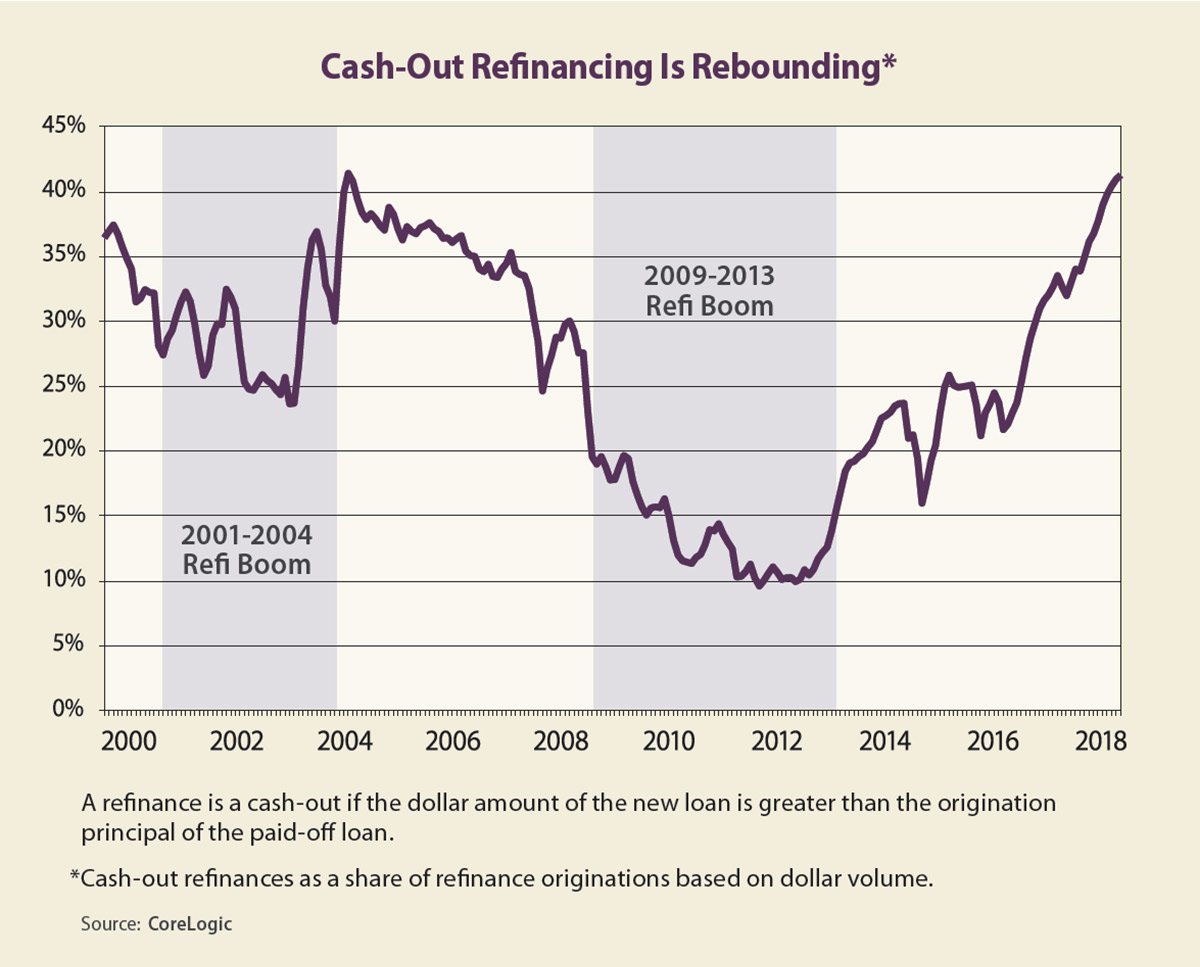Interest rates on 30-year fixed-rate mortgages are forecast to rise gradually in 2019, nudging rates up to an average of about 5.2 percent by year-end — the highest in a decade. Income growth should keep home sales close to last year’s pace, while higher prices will translate into an increase in dollar volume for purchase originations. Nonetheless, higher mortgage rates will dissuade some homeowners from selling and also reduce refinance transactions.
At the margins, homeowners who currently have low-rate mortgages will be incentivized to stay in their homes rather than sell, constraining the new-listings flow. Also, homeowners who had refinanced into low-rate mortgages over the last few years are unlikely to refinance this year — unless they need to cash out some home equity for home improvements or other expenditures.
Using the CoreLogic TrueStandings data, we calculated the cumulative distribution of single-family mortgage debt outstanding by interest rate on the loan. Only 3 percent of the debt outstanding, or about $300 billion worth, had a mortgage rate of 6 percent or higher and had a financial incentive to refinance to a lower rate. Why haven’t these homeowners refinanced already? Some may have insufficient home equity, a recent delinquency, or a small loan balance: The average loan size was about $100,000 for these high-rate loans.
There are many homeowners who have a financial incentive to refinance, albeit for other reasons. Federal Housing Administration (FHA) borrowers, for instance, with at least 20 percent home equity, good credit and a mortgage rate near or slightly below today’s market rates can refinance into a conventional mortgage without mortgage insurance, eliminating their insurance premiums. Between October 2016 and September 2018, about 500,000 FHA borrowers did exactly that, based on analysis of CoreLogic public records data.
As another example, homeowners who are financing a major home improvement may choose to refinance rather than secure a second mortgage. The share of refinance loans that cash out some home equity is generally very small during a refinance boom. During 2012, when 30-year fixed-rates fell to an all-time low, the cash-out share of refinance fell to 10 percent, the lowest recorded in CoreLogic’s public-records data during the last two decades.
When rates have gone up, there are fewer homeowners who refinance to obtain a lower interest rate, and the cash-out share rises. In the CoreLogic public-records data, we found that the cash-out share of new refinances exceeded 40 percent during the third quarter of 2018, the highest in 14 years, and we expect an even higher share this year.
Homeowners who obtain a cash-out refinance when rates are at or above the rate on their prior loan may prefer a term of up to 30 years on their new loan to keep the change in their monthly mortgage payment as small as possible. Thus, in a rising-rate environment, the percentage of borrowers who lengthen their loan term at refinance tends to increase. During 2012, only 13 percent of borrowers who refinanced their 15-year loan chose a longer-term loan. But as rates rose during the second quarter of 2018, 50 percent of those refinancing their 15-year note took a loan with a longer term.
We expect that only one-fourth of originations will involve refinancing this year, which would make it the lowest annual refinance share in 25 years. The dollar decline in refinancing will be largely offset by the dollar increase in the home-purchase lending, keeping the overall dollar volume of originations about the same between 2018 and 2019. The growth in home equity, and the choice of homeowners to stay rather than sell, should increase home-remodeling expenditures and the origination of home equity lines of credit (HELOCs) for home-improvement purposes.
Author
-

Frank E. Nothaft is chief economist for CoreLogic, America’s largest provider of advanced property and ownership information, analytics and data-enabled services. He leads the economics team responsible for analysis, commentary and forecasting trends in global real estate, insurance and mortgage markets. Before joining CoreLogic, Nothaft served as chief economist for Freddie Mac. Prior to Freddie Mac, he was an economist with the Board of Governors of the Federal Reserve System.





